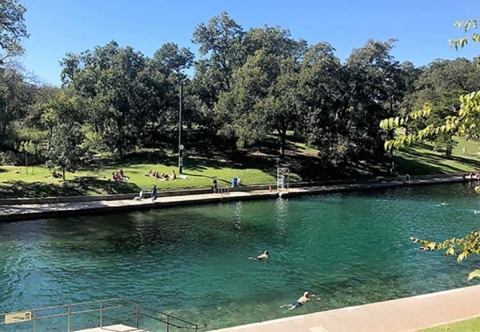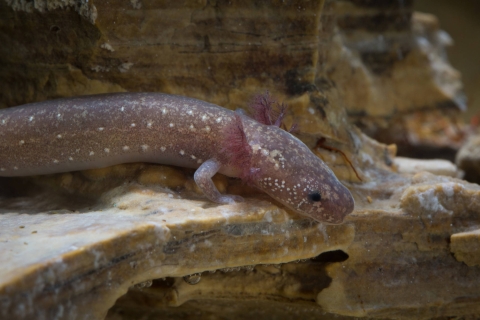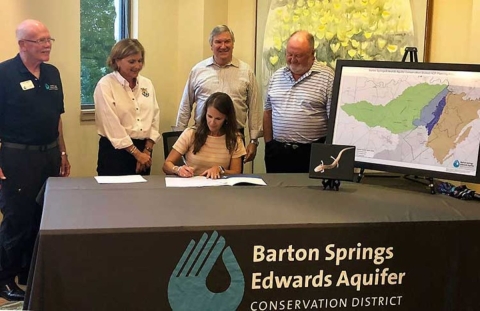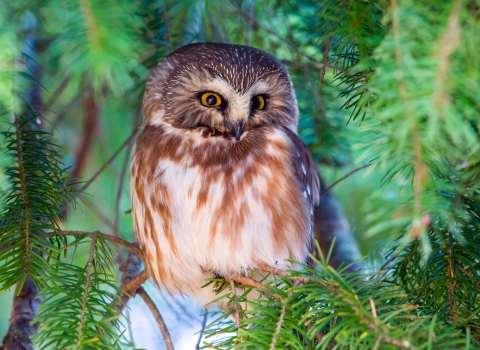With its lush surroundings, rugged limestone, and cool waters, it is not surprising that humans have lived in the area near Barton Springs for at least 11,000 years. Native Americans used the springs for hundreds of years. Franciscan friars built a mission near the Springs in 1730, and Anglo colonists settled here in 1835. The City of Austin acquired the Springs and adjacent property in the early 1900s as part of Zilker Park, which now hosts the famous Austin City Limits music festival.
Barton Springs is the fourth largest natural spring in Texas. It not only provides a valuable source of water for almost 70,000 people and businesses; with its constant temperature of 68 degrees, it serves as an icy retreat from the dog days of summer for families, college students, swimmers, and others visiting Austin. As many as 800,000 people visit the pool every year. It is no surprise that Barton Springs is known as Austin’s “crown jewel.”
With all of this “love” Barton Springs continues to serve as the home for two endangered species, the Barton Springs salamander and the Austin blind salamander. The two springs emanating at Barton Springs Pool, Parthenia and Eliza, named after the daughters of William Barton who settled around the springs when Texas won its independence, are both home to these Texas salamanders.
Efforts to conserve the Barton Springs Aquifer have been underway for more than two decades and speaks to the devotion to this treasured resource. Once the focus of intense local conflict in the 1990s, today these efforts serve as one of the country’s untold environmental and economic development success stories.
Working with the Barton Springs Edwards Aquifer Conservation District, the City of Austin, and other partners, a Habitat Conservation Plan (HCP) was developed that conserves species, provides water security for the District and its water users, and protects an important piece of Texas’ heritage. This was no small feat and is a tribute to the dedication, commitment, and collaboration of all of those involved in the process.
The Habitat Conservation Plan ensures that minimum spring flows will be maintained at the springs for the Barton Springs and Austin blind salamanders. This is largely achieved through reductions in groundwater pumping that can involve as much as reducing pumping by 50 percent during periods of extreme drought. The Habitat Conservation Plan also includes the goal of maintaining the species in refugia in the event of a catastrophic event along with other conservation measures.
Implementation of the District’s Habitat Conservation Plan, is one of a number of important initiatives being led to protect Barton Springs. Additional efforts include a HCP held by the City of Austin for operations and maintenance of Barton Springs pool; 26,000 acres of Water Quality Protection Lands purchased by the City of Austin voters and preserved for the purpose of protecting the aquifer; and efforts to minimize land development’s impact on the aquifer. Thanks to these combined efforts this incredible resource will continue to be protected.
The U.S. Fish and Wildlife Service joined the Barton Springs Edwards Aquifer Conservation District, the City of Austin, and other partners to celebrate the completion of the HCP on September 20 at the Lady Bird Johnson Wildflower Center. “It is important that we celebrate these conservation successes,” said Amy Lueders, Southwest Regional Director. “Thanks to the vision, dedication and commitment of many this Texas treasure will be managed and maintained for future generations.”







